13 Gadgets and Counting

Heat transfer is the fundamental principle of cooking. Transferring the energy of different forms (thermal, chemical, electrical) to the food is what makes cooking happen. The efficiency of the different methods is measured by how much of the inputted energy is used to cook the food. Among all the available methods the most dominant and more efficient is the pressure cooker. No wonder the pressure cookers are so extensively used. Modern iterations of pressure cookers are even more efficient and usually can do more than one thing. With all these benefits it’s a wonder that pressure cookers aren’t even more popular. The most notable characteristic of these – Read More…
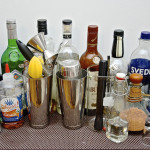
A while ago I wrote about an alternative bar set where everyday household items substitute professional barware. However it did occur to me, that I had never had a post about the regular barware items you must have in a home bar. One of the very first post on the gadgets section of the blog was about that, but back then I was just starting. Since then I did optimize my bar set. I should mention also that I am not a professional bartender but I do enjoy the fine art of mixed drinks. It is a very inexpensive way to have fun, and at the same time with the popularity of the cocktails, it is a focal point at every party. You don’t have to be a professional – Read More…
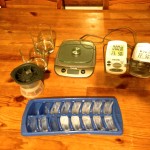
In the Previous post, we discussed the process of making ice, the tools and the techniques. However, we were left at the most interesting point. What is the best ice and for what application? General purpose ice, cocktail making/shaking, cocktail serving, whiskey tasting etc. This is what we are addressing now. We will see what are the evaluation criteria, and how we can pick the best ice type for each application.
The ice evaluation experiment will compare the regular ice cubes we make in our refrigerator with the regular ice tray, the sphere ice, the store purchased ice and the whiskey rocks. Whiskey rocks are not as – Read More…
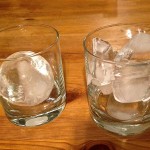
The famous by now hit, “Ice Ice Baby” is a hip hop song written by American rapper Vanilla Ice and DJ Earthquake. Here we will not hip-hop. We will focus on the ice. Ice. The essential part of every cocktail. It is the one item that can ruin a party. Every time I am making cocktails I buy fresh ice since the one left in the freezer can pick up smells like nothing in the world. Ice is water. Water gets along with many molecules. Some of them smell funky. So when the solid water gets in contact with these molecules even in the harsh freezer environment, it will immediately absorb them. In many cases, even the ice-cube trays can pick up smells.
Read More…
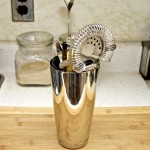
The home bartending is a fun hobby. So much fun, that almost every wedding registry has at least one bar set, that usually ends up in the cabinet never to be used… And now that the hot summer skyrocketed the cocktail demand, home bars become a necessity. Still, however, there are people who think that there is way to much money required to start a hobby that will be only sparkly used. And that actually might be true! If you want good quality hardware a rough estimation comes to about $50. On that you have to add the cost of the liquor and you have a cost that shatters your dreams. And although the liquor cost cannot be reduced (well, it can be, but then a – Read More…

One of the biggest inventions in the history of mankind is the use of fire for food. It opened a whole new horizon to food that prior to heating was not even imagined as eatable. Not only that, but heating food made it a lot safer and reduced significantly the food poisoning that as you can imagine back then it was a huge cause of death. Prehistoric people use to eat other than game corpses and meat that was rotting for days. Heat improved the quality of the meat and it’s safety.
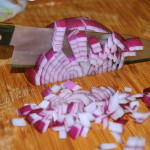
Item one is the handle. I did not include it in the materials section since the actual material cannot affect the edge cutting quality and overall – Read More…
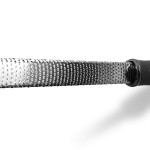
Graters have been around for very long time, and are very useful in the kitchen for grating everything from cheese and spices to garlic and potatoes. Although there are many different types of graters their shape has not change since its inception. They are either box or flat, maid with metal (or some newer models with plastic) with raised scales that are sharp and actually are doing the grating. The quality of the grater depends upon these scales. How sharp they are and how well they maintain their shape. – Read More…
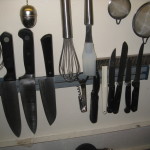
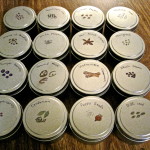
Let’s start with the basic distinction between spice and herbs. From wikipedia we quote:
“…A(n) herb (pronounced /ˈhɝb/ or /ˈɝb/; see pronunciation differences) is a plant that is valued for qualities such as medicinal properties, flavor, aroma, or the like…”
“…A spice is a dried seed, fruit, root, bark or vegetative substance used in nutritionally insignificant quantities as a food additive for the purpose of flavoring, and sometimes as a preservative by killing or preventing the growth of harmful bacteria…”
Which sounds very – Read More…
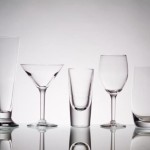
In the last post I talked about wine glasses and how the shape, size and overall construction, are enhancing the overall experience. I left out the beers and I debated quite long time if I should have a similar entry for beer. You see, although for instance white wines share many common characteristics although they are different, in a way, beer although it is the same type, there have more different than common elements. In certain type of wine there are the grapes and the aging process. In beer is the starchy elements (wheat, barley rice etc), the hops, the water and the aging process. So although all wheat beers are the same in principle the differences are – Read More…

In a previous post we covered the basic for the of the cocktail or bar glasses as part of the tools required for a basic home bar. The difference is that with the possible exception of the Martini glass they do not influence the drinking experience. And even in the case of Martini it is only to keep it cold since it has no ice. On the contrary, for the wine the shape can influence the taste and the overall experience equally to the wine type and the serving temperature. In the wine the aromas are equally important as the taste and a badly selected glass can ruin the overall experience.

Mixology is referred to the art of mixing beverages alcoholic or not, usually cold in a combination that will yield a drink with a new flavor called cocktail. The word cocktail itself originally was an adjective describing a creature with a tail like that of a cock, specifically a horse with a docked tail; hence (because hunters and coach horses were generally docked) a racehorse that was not a thoroughbred, having a cock-tailed horse in its pedigree (early 19th cent.). Sense 1 (originally U.S., also early 19th cent.) is perhaps analogous, from the idea of an adulterated spirit. Later of coarse the word was used to describe the very well known alcholic (or – Read More…


Leave a Reply